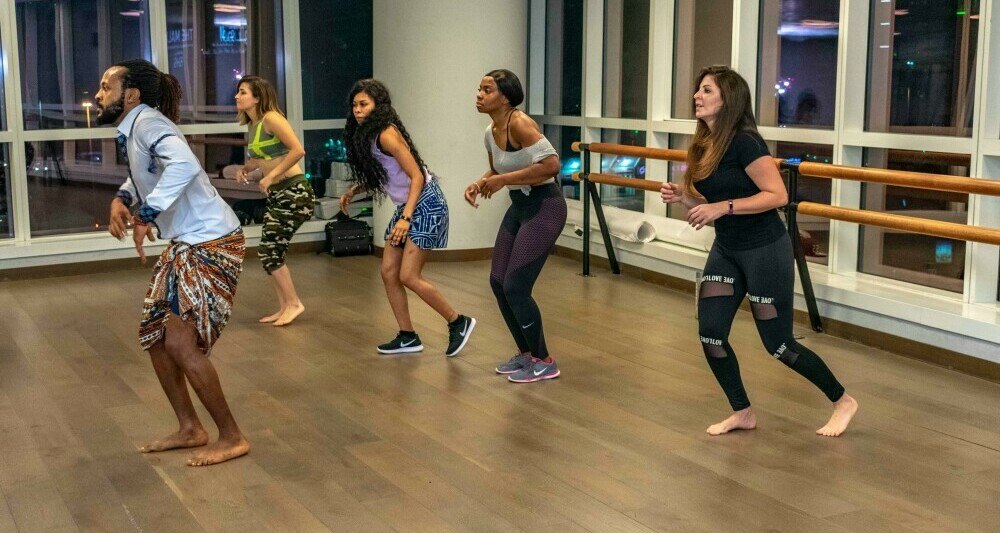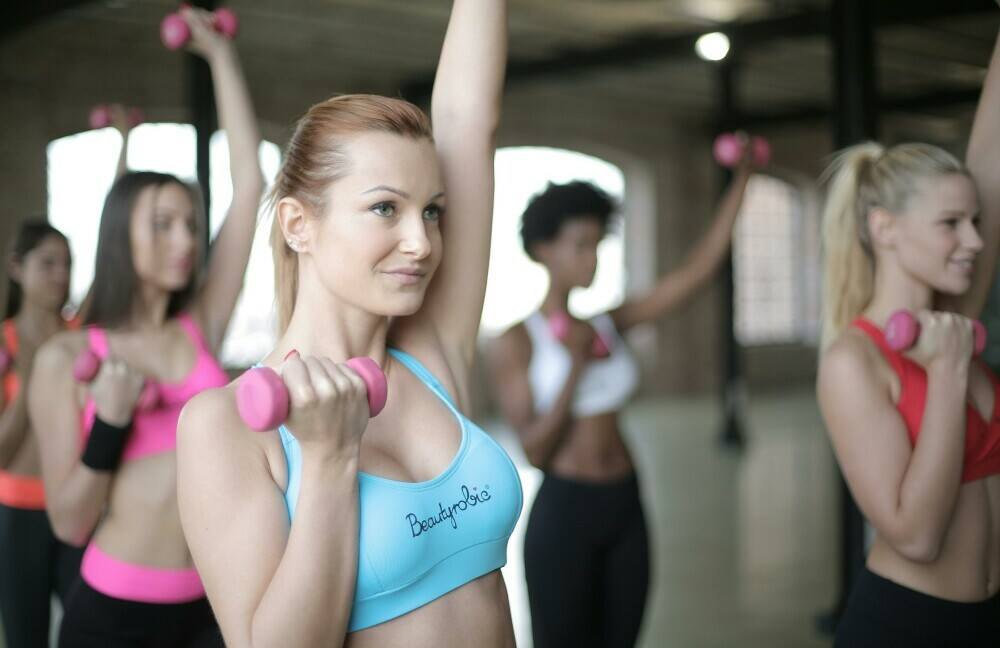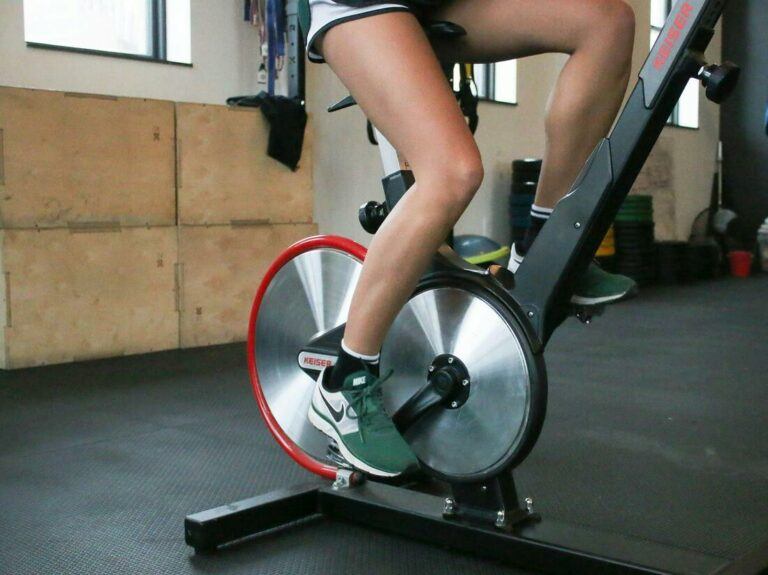Congratulations on taking the first step towards a healthier you! Building a balanced fitness routine is a fantastic way to improve your overall well-being.
But with so much information out there, it’s easy to wonder: Is cardio really necessary?
The answer is a resounding yes!
Cardio, also known as aerobic exercise, plays a vital role in a well-rounded fitness plan.

Here we will explore the many benefits of cardio, provide tips on incorporating it into your routine, answer any questions you might have as a beginner, and equip you with a sample workout plan to get you started!
The Heart of the Matter: Why Cardio Matters
Cardio gets your heart pumping and blood flowing, delivering oxygen and nutrients throughout your body.
This translates to a multitude of health benefits, including:
- Stronger Heart: Cardio strengthens your heart muscle, allowing it to pump blood more efficiently. This reduces your risk of cardiovascular disease, the leading cause of death worldwide.
- Improved Lung Function: Regular cardio exercises your lungs, increasing your lung capacity and allowing you to breathe easier during physical activity and everyday life.
- Weight Management: Cardio burns calories, aiding in weight loss or weight management efforts.
- Boosted Mood and Energy Levels: Exercise releases endorphins, hormones that elevate mood and promote feelings of well-being. You’ll feel more energized and ready to tackle the day.
- Better Sleep: Regular cardio can improve sleep quality, leaving you feeling refreshed and focused.
- Sharper Mind: Studies suggest cardio can improve cognitive function and memory.
Cardio Doesn’t Have to be a Chore!

The good news? Cardio comes in all shapes and sizes!
Here are some beginner-friendly options to find your exercise groove:
- Brisk Walking: This is a simple and effective way to get started. Put on your favorite tunes and explore your neighborhood.
- Swimming: A low-impact option that’s easy on your joints yet provides a full-body workout.
- Cycling: Hit the trails or enjoy a scenic bike ride outdoors. Indoor cycling classes are also a great option.
- Dancing: Turn up the music and have fun! Dance classes or simply letting loose in your living room provide a cardio workout with a smile.
Finding Your Cardio Fit

How Much Cardio is Enough?
The American College of Sports Medicine recommends at least 150 minutes of moderate-intensity aerobic activity or 75 minutes of vigorous-intensity activity per week.
- Moderate-intensity: This level gets your heart rate up but allows you to carry on a conversation. Think brisk walking, cycling at a leisurely pace, or swimming.
- Vigorous-intensity: This level makes it difficult to hold a conversation. Examples include running, swimming laps, or high-intensity interval training (HIIT).
Building a Balanced Routine
While cardio is crucial, don’t neglect strength training. Aim for at least two days per week of exercises that target all major muscle groups.
Sample Beginner-Friendly Cardio Routine:
Option 1: Moderate Intensity (30 minutes):
- Brisk walking for 20 minutes
- Light jogging for 5 minutes (alternate with walking if needed)
- Cool down with 5 minutes of gentle stretching
Option 2: Vigorous Intensity (20 minutes):
- Running for 10 minutes (alternate with walking if needed)
- High knees or jumping jacks for 30 seconds each (repeat 3 times)
- Burpees (modified if needed) for 30 seconds (repeat 2 times)
- Cool down with 5 minutes of gentle stretching
Remember:
- Start slow and gradually increase intensity and duration.
- Listen to your body and take rest days when needed.
- Warm up before each workout with 5-10 minutes of light cardio and dynamic stretches.
- Cool down after each workout with 5-10 minutes of static stretches.
- Stay hydrated by drinking plenty of water before, during, and after your workout.
- Find activities you enjoy to make exercise a sustainable part of your life.
Addressing Common Concerns

- What if I get too out of breath? Don’t worry! Simply slow down your pace or take walking breaks during your cardio session. You can gradually increase the intensity as your fitness improves. Remember, it’s okay to listen to your body. If you need a break, take one! The goal is to be consistent and gradually challenge yourself.
- I don’t have a lot of time to exercise. Even short bursts of activity count! Start with 10-minute workouts and gradually increase the duration as your schedule allows. You can also break down your cardio throughout the day. Take the stairs instead of the elevator, park further away from your destination, or do a quick burst of jumping jacks during a commercial break. Every little bit counts!
Ready to Get Started?

Now that you understand the importance of cardio, it’s time to lace up your shoes and get moving!
Here’s a quick visual guide to help you remember the key takeaways:
| Part | Benefit | Description |
|---|---|---|
| Heart | Stronger Heart | Cardio strengthens your heart muscle, allowing it to pump blood more efficiently. This reduces your risk of cardiovascular disease. |
| Lungs | Improved Lung Function | Regular cardio exercises your lungs, increasing your lung capacity and allowing you to breathe easier during physical activity and everyday life. |
| Scale | Weight Management | Cardio burns calories, aiding in weight loss or weight management efforts. |
| Smiley Face | Boosted Mood and Energy Levels | Exercise releases endorphins, hormones that elevate mood and promote feelings of well-being. You’ll feel more energized and ready to tackle the day. |
| Sleeping Person | Better Sleep | Regular cardio can improve sleep quality, leaving you feeling refreshed and focused. |
| Brain | Sharper Mind | Studies suggest cardio can improve cognitive function and memory. |
Remember, consistency is key. Start small with a beginner-friendly workout plan like the ones provided.
Find activities you enjoy, and gradually increase your workout intensity and duration.
Your body and mind will thank you for it!
Don’t forget to warm up before each session and cool down afterwards to prevent injuries.
Here are some additional resources to support your fitness journey:
- The American Council on Exercise (ACE): https://www.acefitness.org/
- The Centers for Disease Control and Prevention (CDC): https://www.cdc.gov/physicalactivity/index.html
- Fitness tracking apps: Many apps offer workout routines, track your progress, and connect you with a fitness community.
Take charge of your health and well-being today!
Incorporate cardio into your routine and feel the amazing benefits it has to offer.
You’ve got this!
Now it’s your turn! What are your favorite cardio exercises?



